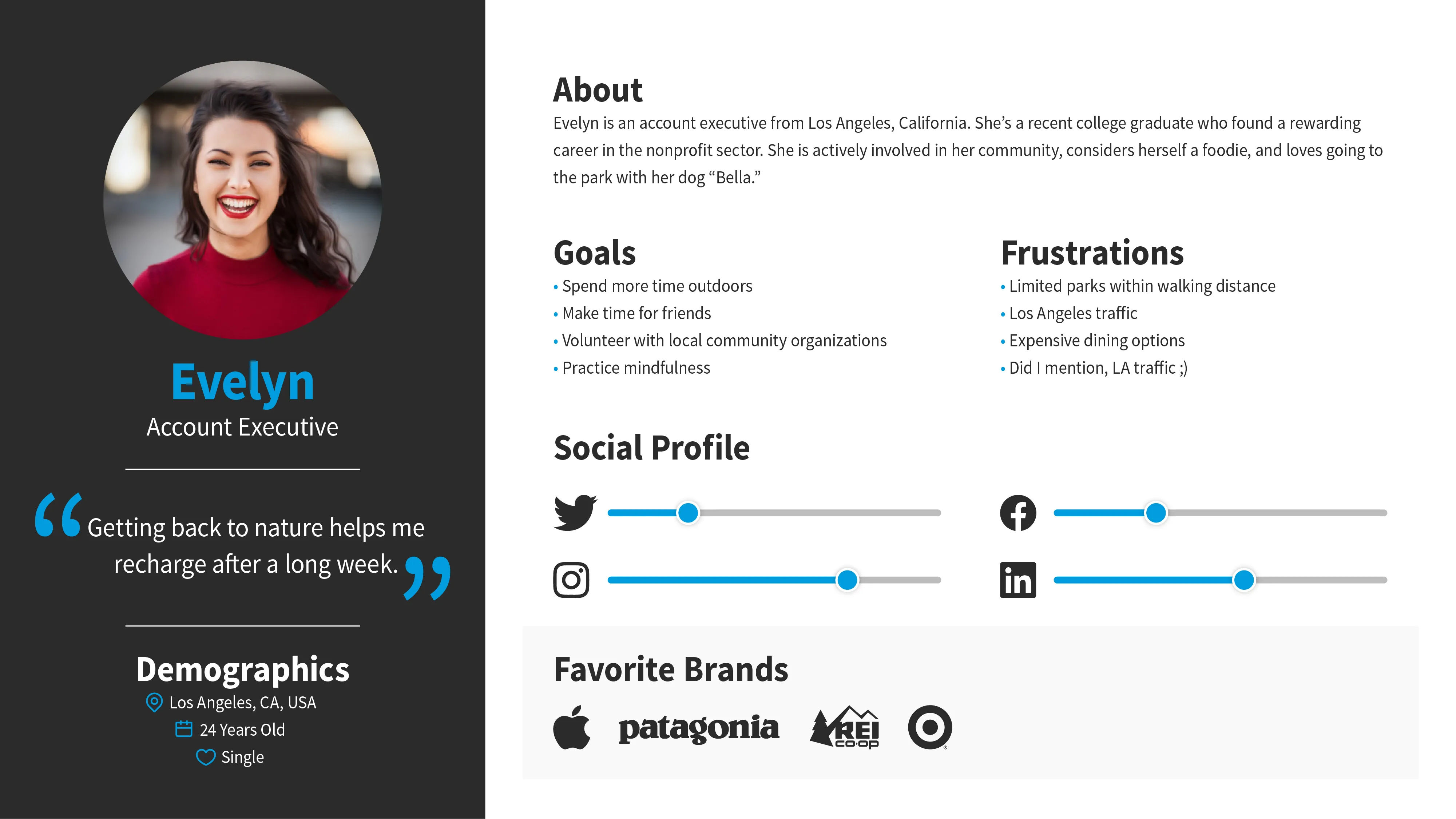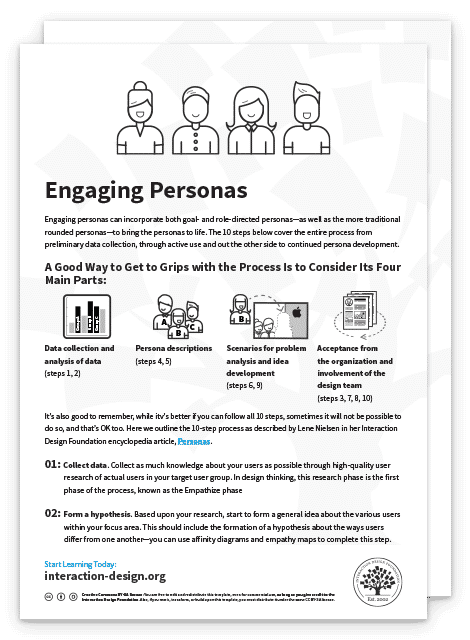To design successful user experiences, it's critical to understand your users. One way to learn about your users is with user personas. Here, we’ll explore the benefits of personas in UX design and provide a step-by-step guide on how to create compelling user personas that inform your design choices.
In this video, HCI expert, Professor Alan Dix explains what personas are and why they help you in the design process.
Show
Hide
video transcript
- Transcript loading…
Whether you're designing a website, app, or product, understanding your users through user personas can guide you to more successful outcomes for both you and your users.
Personas are fictional representations of your target audience that help you empathize with them and understand their goals and motivations. Carefully crafted personas can help you make better design decisions.
The user persona is one of the most valuable tools in UX work. It allows the entire design and development team to keep real user stories in mind as they work. This results in better-tailored products for the end user and, thus, ones that are more likely to succeed. There are two types of personas UX designers create:
The Proto-Persona: In some cases, designers may need more resources or time to conduct extensive user research before they start a project. In such situations, they create a proto-persona as a helpful tool for early-stage design. A proto-persona is a “quick and dirty” persona based on whatever research they can get from other sources, such as market research or demographic data.
The Evidence-based Persona: This is a fictional representation of a target audience created through user research methods such as interviews, observations, task analysis, contextual interviews, and ethnography.
One of the many benefits of user personas is to have your team focus on an outcome, which is to design in alignment with the users' wants and needs. They also help prevent scope creep and self-referential design, that is, design as if you were the user.

In UX design, personas are fictional representations of a target user group. The primary purpose of a persona is to provide a clear picture of the group's demographics, as well as their goals, needs, behaviors and pain points.
© Interaction Design Foundation, CC BY-SA 4.0
The primary purpose of a persona in UX design is to provide a clear picture of the target user group: this includes information about demographics, goals, needs, behaviors and pain points. Combine personas with scenarios to create the most effective products.
There are four key uses of the persona in product design:
To validate the decisions made by the design team: Personas help designers create specific designs for particular user groups.
To prioritize features: Personas help you to establish priorities when ideas conflict for resources or time.
To understand users' needs and goals: Personas should be available during ideation sessions to inspire and keep the team grounded and focused on the user.
To test designs: Refer to your personas during critique sessions or iterations of the product.
Mobile User Personas: Considerations and Differences from Traditional Personas

Consider the unique constraints and opportunities presented by mobile devices when you create mobile user personas.
© BullRun, CC BY-NC 2.0
The process to create mobile user personas is the same as the one followed to make any other type of persona. But when it comes to mobile user personas, you need to take into account several unique considerations that differ from traditional user personas. Mobile users are often on the go, multitasking, and have limited attention spans. As a result, their goals may vary significantly from those of desktop users.
Ethnographic research is very important—your research should be observation-based and conducted "in the wild" to establish how users behave. Mobile user personas should consider location, connectivity, and device usage patterns.
Additionally, mobile user personas should focus on the key tasks users want to accomplish when using the app or website. This requires that you, as a designer, have deep knowledge of specific features and functionality that mobile users need while "on the fly."
Craft Your First User Persona: A Step-by-Step Guide
Role-based personas are important to understand user behavior and preferences. When you create a persona and take into account the many hats they might wear, you can better understand how they might interact with your products.
Here, you'll explore the important concept of context of use and discover how it can inform your design decisions.
Show
Hide
video transcript
- Transcript loading…
The design of user personas is a crucial step to ensure that products meet the needs of your users. Here's a step-by-step guide on how to create effective user personas, plus a downloadable template:


Step 1: Define Your Target Audience
Who are you designing for? What are their objectives, motivations, and pain points? Recruit users who are representative of your target audience.
Step 2: Conduct User Research
This can include interviews with potential users, observations of people using similar products or services, task analysis, contextual interviews, and ethnography. The goal is to gather as much information as possible about your users.
Step 3: Analyze Your Data
Look for patterns in the information you gathered, then group the people that display such patterns together.
Step 4: Create Your Personas
Give each persona a name, photo (if possible), background story, personality traits, goals, motivations, behaviors, and pain points. Make sure each persona feels real so stakeholders and team members can better understand the target audience. For this, try and use verbatim notes from your research.
Step 5: Validate Your Personas
Finally, it's important to validate your personas by testing them with real users. This will show you if they accurately reflect the needs and expectations of your target audience. Use feedback from these tests to make any necessary adjustments to your personas and continue to refine them as needed.
The Take Away
When it comes to mobile UX, context of use becomes a critical part of the persona, and to create effective ones, it's important to understand where and how users will interact with your product.
For example, if you're designing a mobile app for hikers, understanding the context in which they'll be using the app, such as a mountain trail with limited connectivity, can help you create user personas that account for these constraints.
To make these personas more relatable and actionable for stakeholders and team members, deliver them as stories that help them connect with the user's needs. Doing so ensures that everyone involved in the project understands their audience and can make better design decisions based on their needs.
References and Where to Learn More
Check out Dan Rosenberg’s Master Class webinar on Actionable Personas.
Learn about Whitney Quesenbery’s persona guidance.
Read 5 Persona Distinctions: How to use Personas properly.
Hero Image: © Interaction Design Foundation, CC BY-SA 4.0












